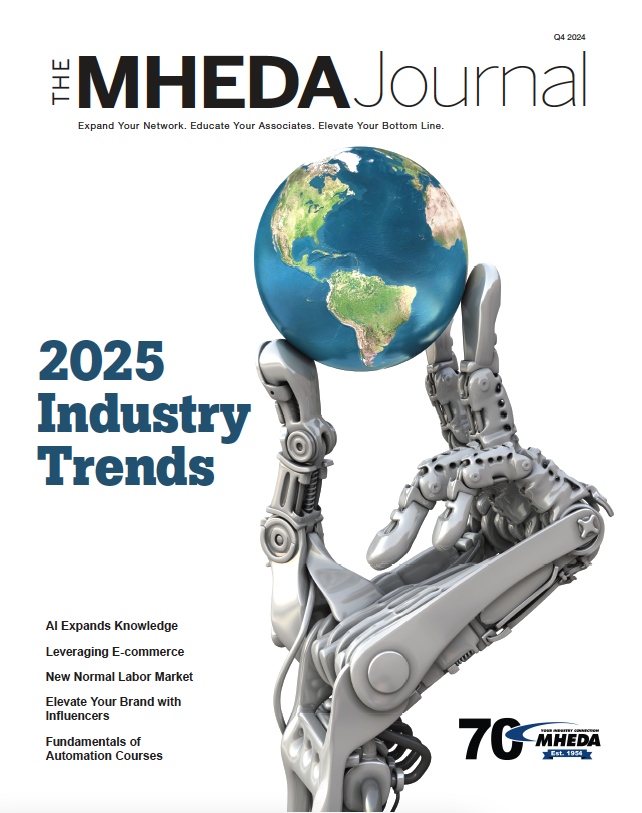MHEDA’s 2018 Critical Impact Factors
October 1, 2017
The following 2018 Critical Impact Factors were defined by MHEDA’s Executive Committee. They are defined as “critical” in that they are significant challenges or opportunities that have recently emerged or become pervasive and should be considered as members develop their internal business plans. This year’s Critical Impact Factor planning process deviated slightly from past years, which can be read about on page 34.
1 It is critical for member companies to engage in business strategy planning to address all facets of the organization including exit strategies, disaster planning, marketability of the company, and adaptability of technological advances.
2 End users continue to seek and implement automated solutions driven by skilled labor shortages, minimum wage increases and a desire to reduce fleet size. Members must evaluate and understand the risks and opportunities that exist to participate in automation solutions.
3 The current trend of strong economic expansion has surpassed the historical business growth cycle. Indicators continue to reflect strong economic growth however members must be prepared for a correction while capitalizing on the current robust business climate.
4 Changes to the new lease accounting standards under GAAP/FASB are being phased in beginning December 2018. Members need to consult with professional advisors to understand how this will affect their financial metrics and how it may impact the financing of customer equipment.
5 With the changing buying patterns including online research and purchasing, it is imperative that distributors understand, embrace and implement an electronic B2B strategy i.e. e-commerce, digital marketing, SEO, etc.
6 Recruitment and retention of employees continues to challenge companies and members must create a culture that attracts top talent. Having a multifaceted recruitment strategy along with a structured on-boarding program and professional development path is critical.
7 Changes in technology have challenged the current capabilities within many companies. This includes changes in equipment/automated solutions as well as internal information systems. This trend will continue as equipment and systems get more complex. Members must source talent with the digital expertise necessary to grow the organization.
8 The continued demand for data collection from material handling equipment provides a revenue stream opportunity. This includes warehouse control, management systems and telematics.
9 Customer demands are resulting in challenges to the traditional distributor model and must be recognized. This includes the prevalence of third party fleet providers, factory direct channels, OEM automation strategies, and online suppliers. Distributors must be forward thinking as to how their organization will evolve and provide service/value to the end user.
10 Businesses need to adapt their communication strategies to cross all forms of technology in order to connect with their employees and multi-generational buyers.
11 There are increasing requirements for permitting, contractor licensing and safety. Members must have a clear understanding of these requirements and recognize both the risks and opportunities.






